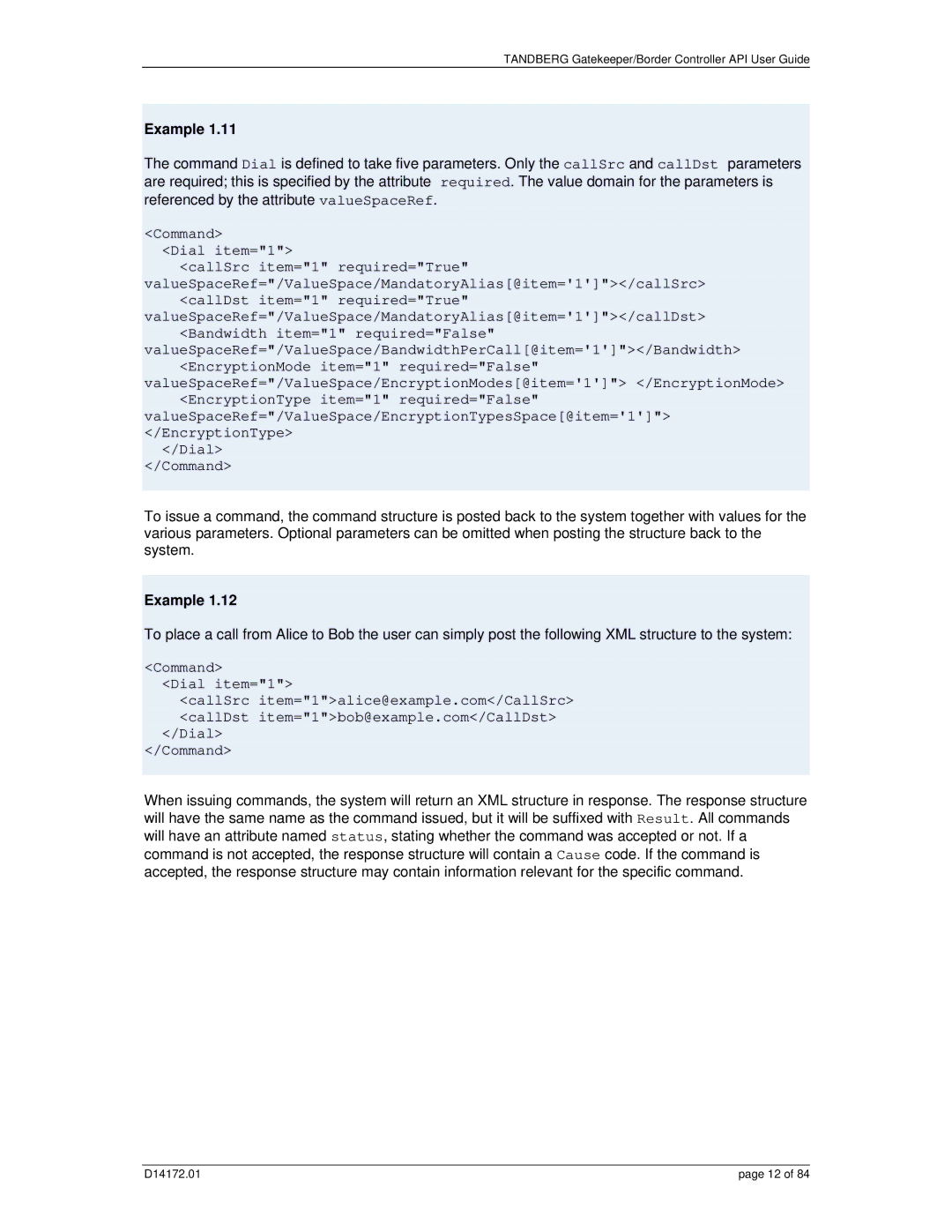D14172.01 specifications
The TANDBERG D14172.01 is a sophisticated video conferencing solution designed to enhance communication for businesses and organizations. Renowned for its reliability and advanced features, the D14172.01 facilitates seamless interactions across different locations, promoting effective collaboration among teams.One of the main features of the TANDBERG D14172.01 is its exceptional video quality. With high-definition resolution, it delivers crystal-clear visuals, making virtual meetings feel more personal and engaging. The system supports a wide range of codecs, ensuring compatibility with various devices and platforms, thereby streamlining the integration process into existing communication setups.
Another significant characteristic of the D14172.01 is its user-friendly interface. Designed with simplicity in mind, it allows users to initiate and manage video calls effortlessly. The intuitive controls enable both tech-savvy individuals and those less familiar with technology to navigate the system with ease, reducing the learning curve and enhancing user adoption.
The inclusion of advanced audio technologies further elevates the user experience. With noise suppression features and high-fidelity microphones, the TANDBERG D14172.01 ensures that participants can hear and be heard clearly, minimizing disruptions and allowing for more productive conversations. This feature is particularly beneficial in larger meeting rooms where background noise can be a concern.
Flexibility is another hallmark of the D14172.01. It supports multiple connectivity options, including Wi-Fi, Ethernet, and Bluetooth, enabling users to connect from virtually anywhere. This versatility is essential in today’s hybrid work environments, where team members may be working remotely or on-the-go.
Importantly, the system boasts robust security features, safeguarding sensitive information exchanged during video conferences. With encryption protocols and secure access controls, organizations can confidently communicate without the fear of privacy breaches.
In summary, the TANDBERG D14172.01 stands out in the realm of video conferencing solutions due to its high-definition video quality, user-friendly interface, advanced audio technologies, connectivity options, and strong security measures. These features make it an invaluable tool for businesses seeking to enhance their communication capabilities and foster greater collaboration among their teams, regardless of geographical barriers. With the D14172.01, organizations can significantly improve their virtual meeting experiences, driving productivity and innovation in an increasingly digital world.

